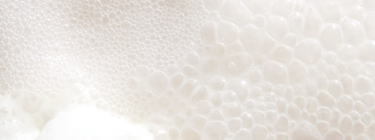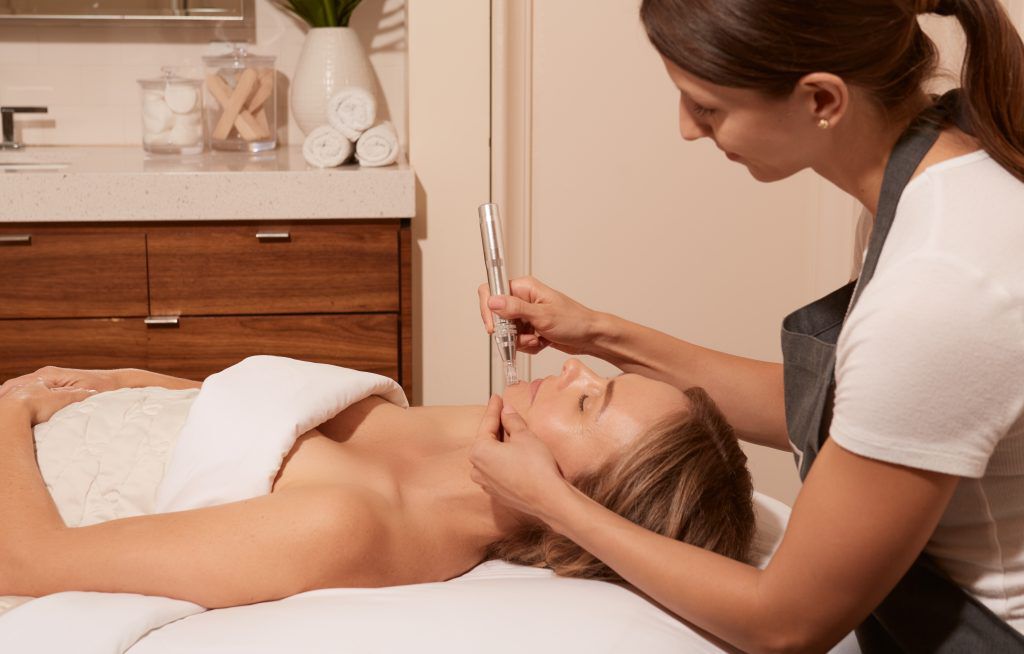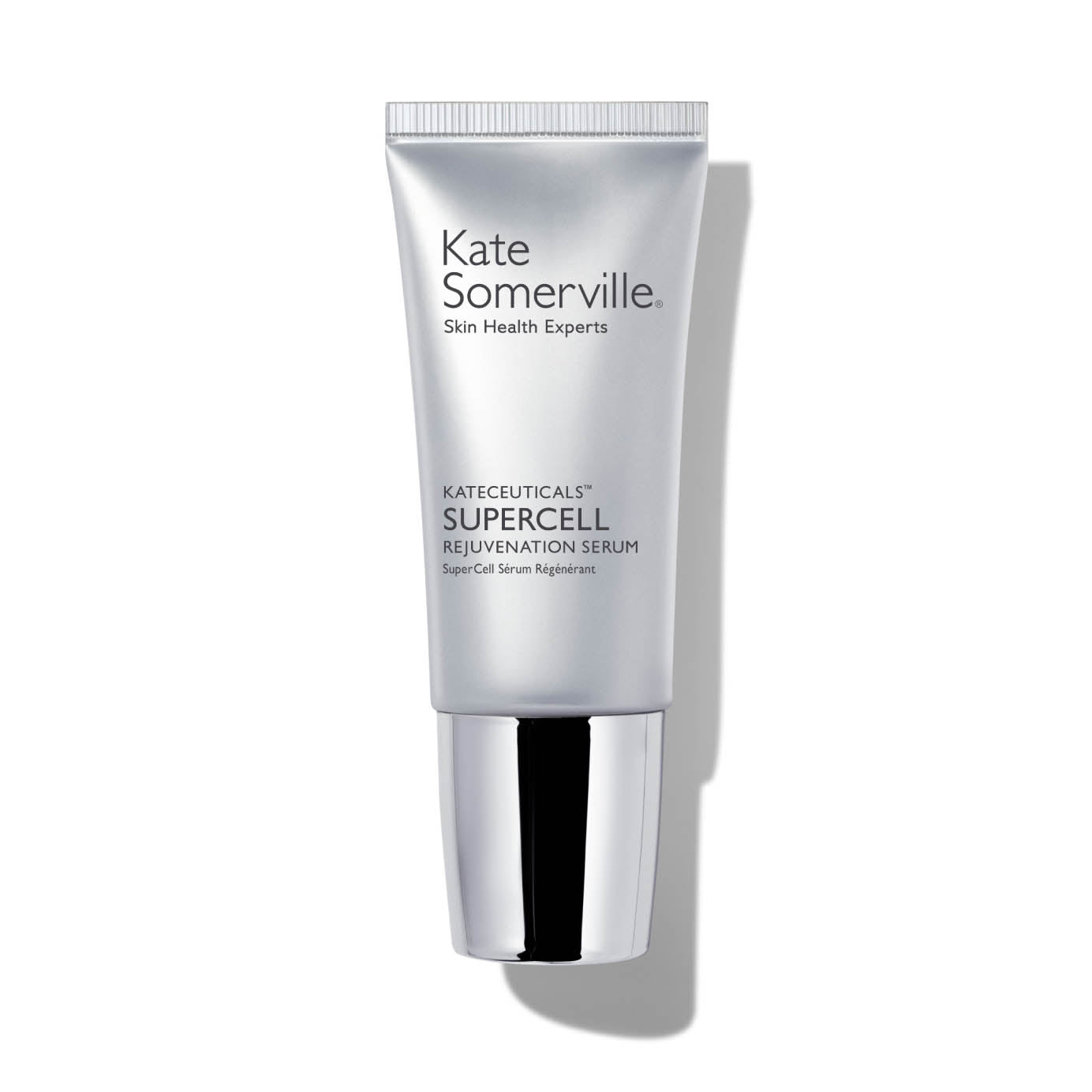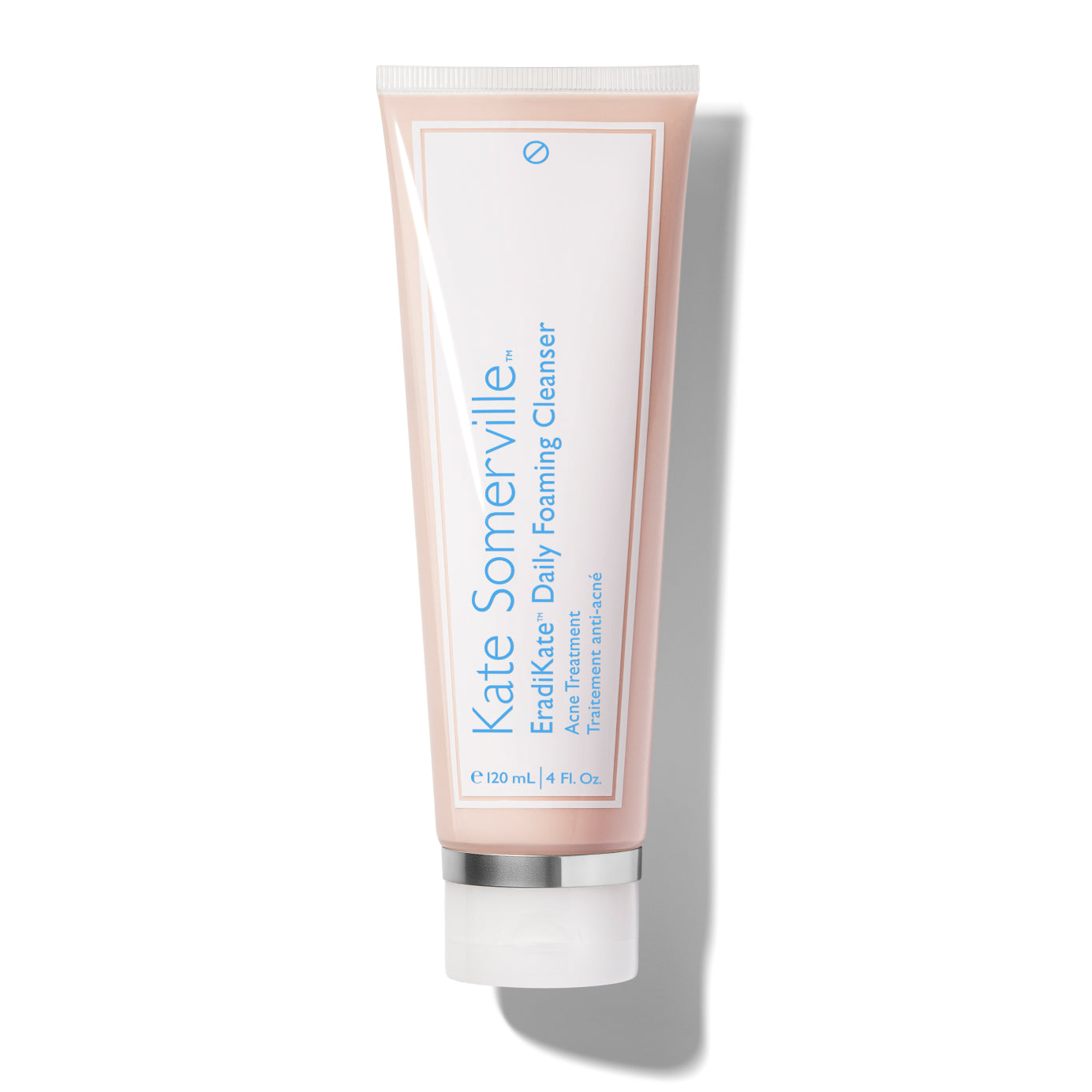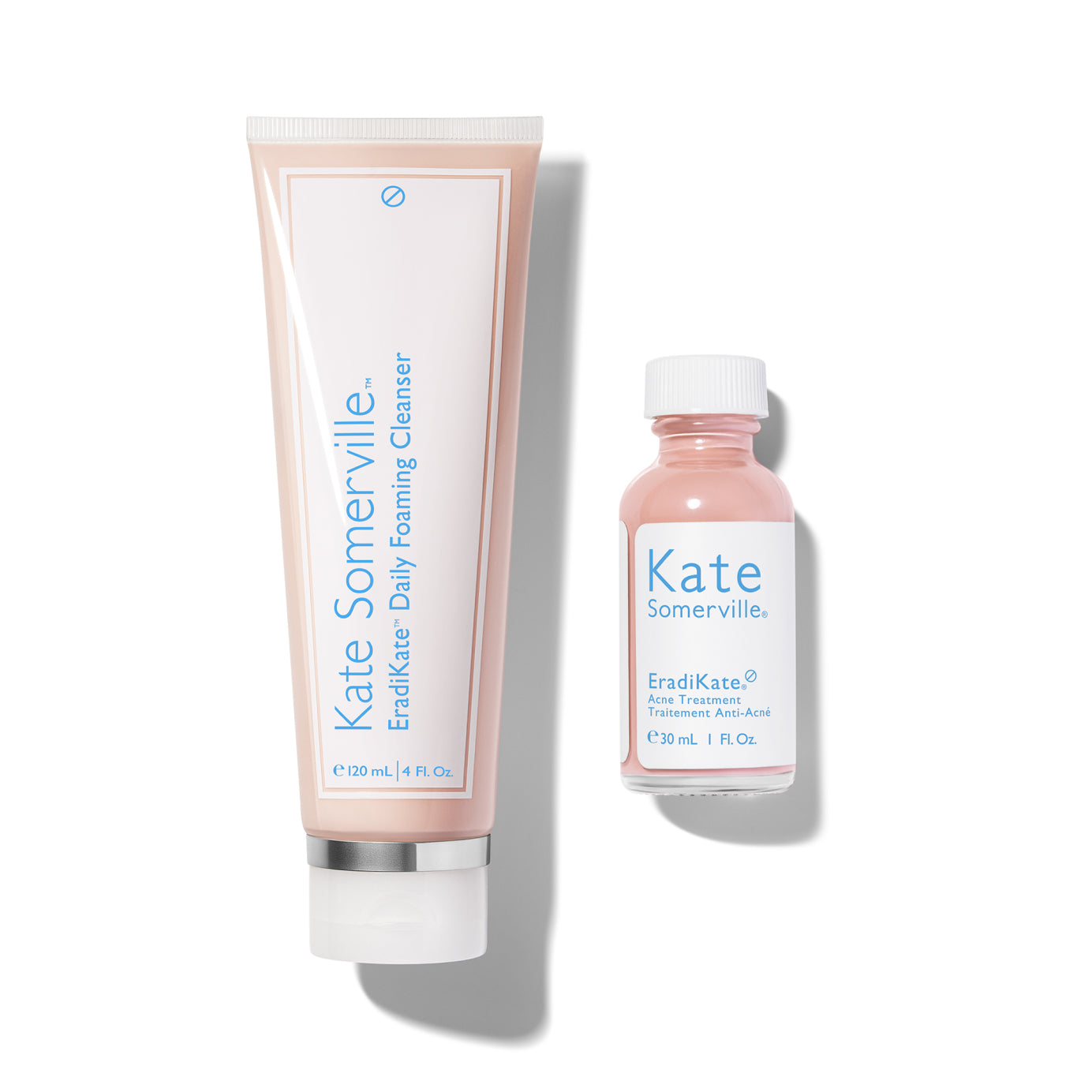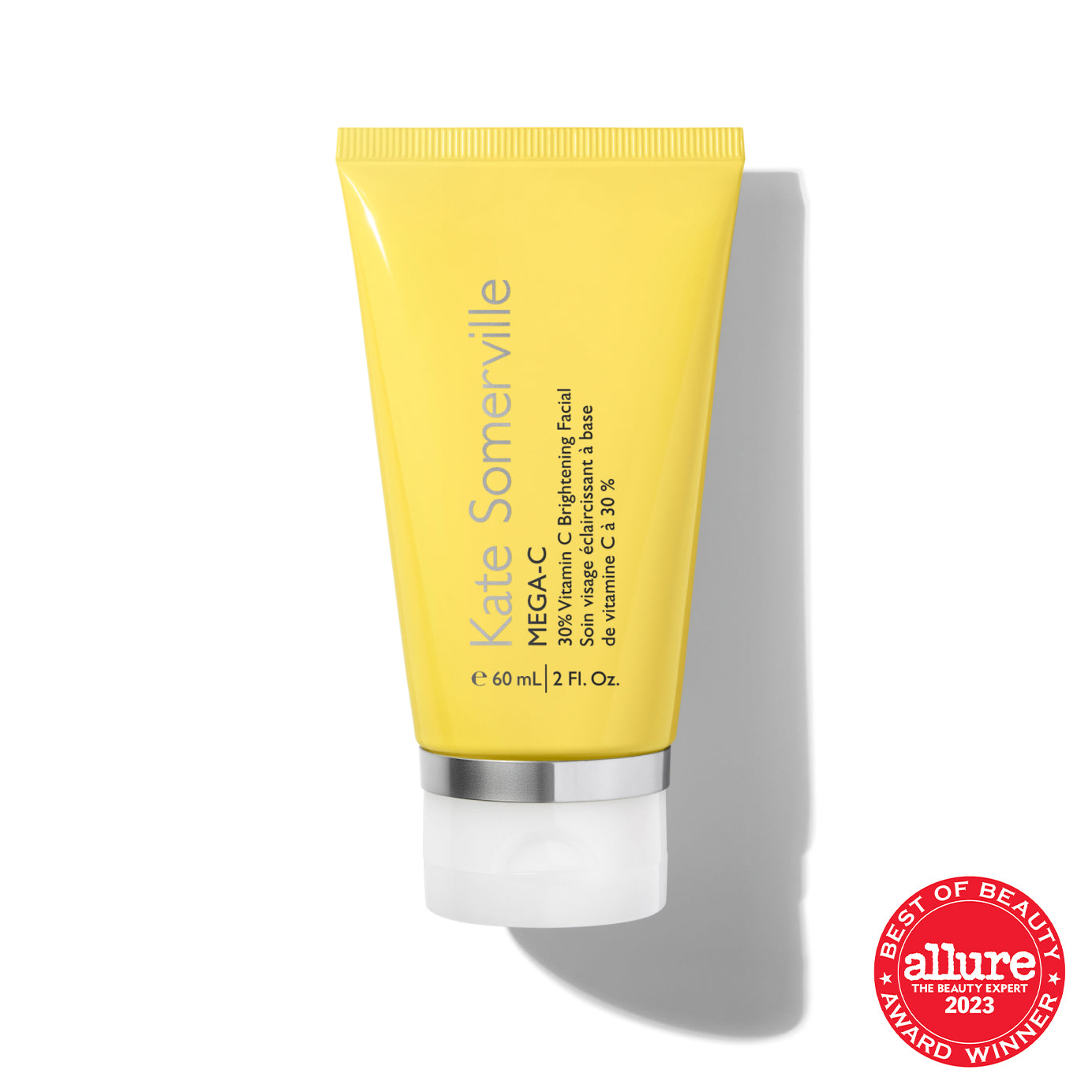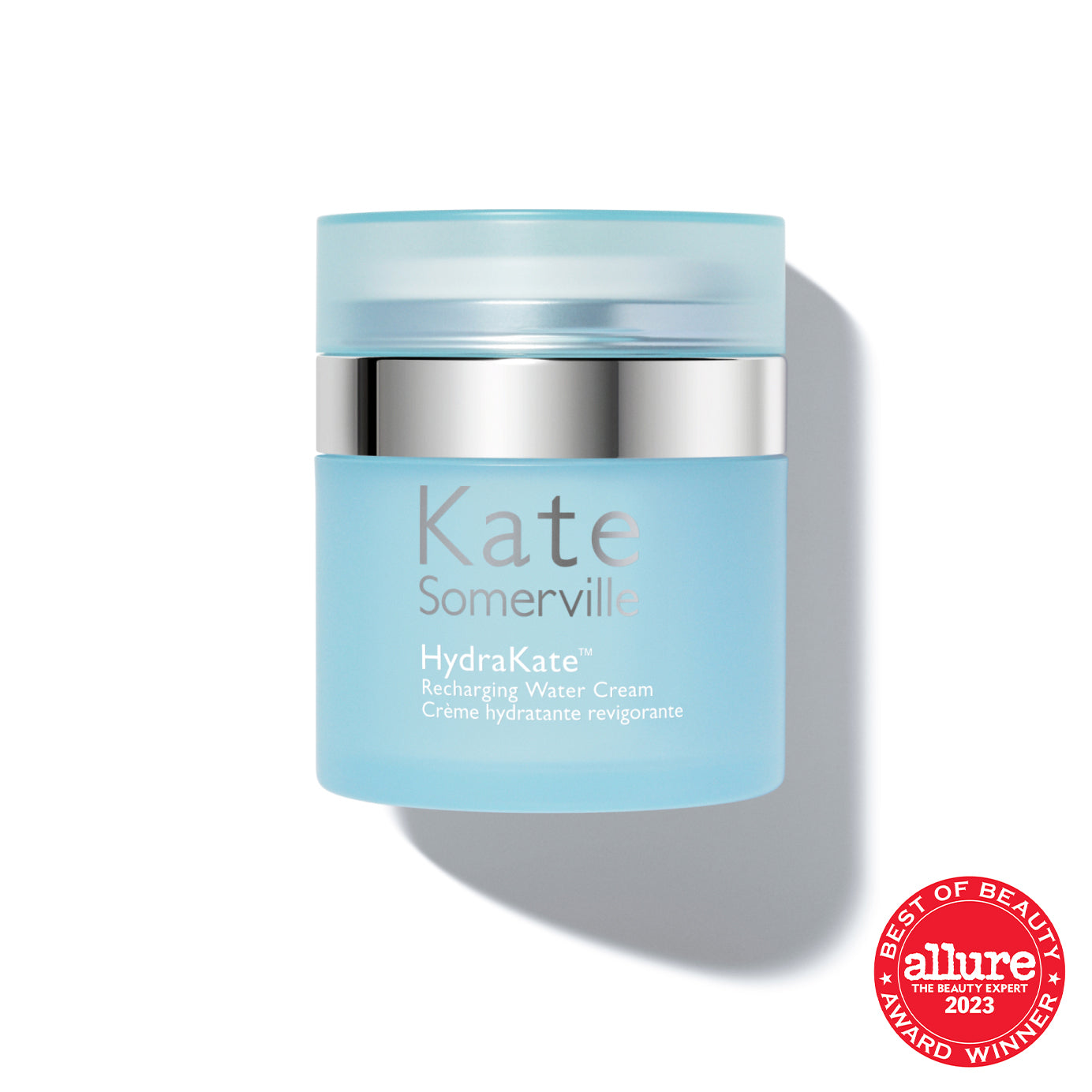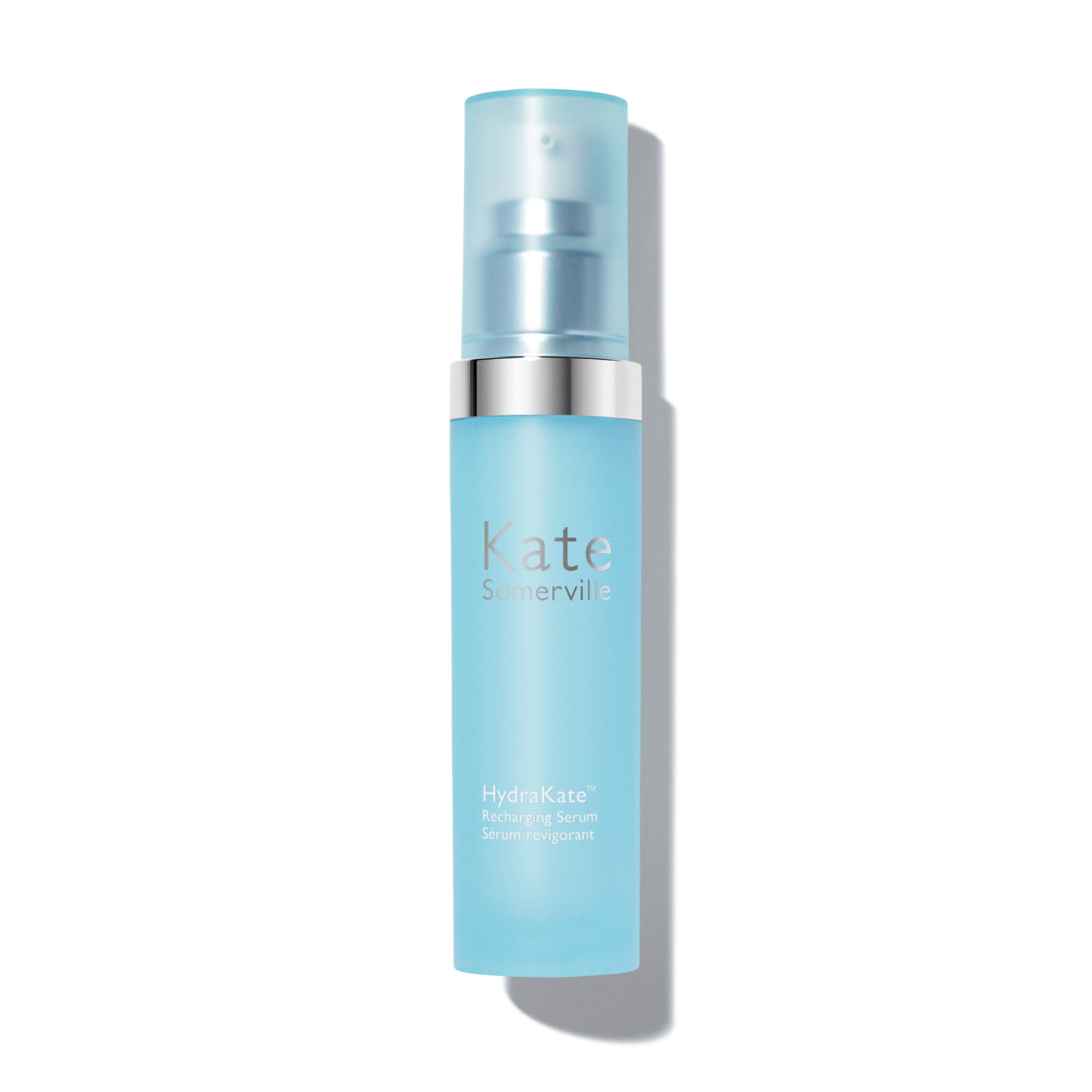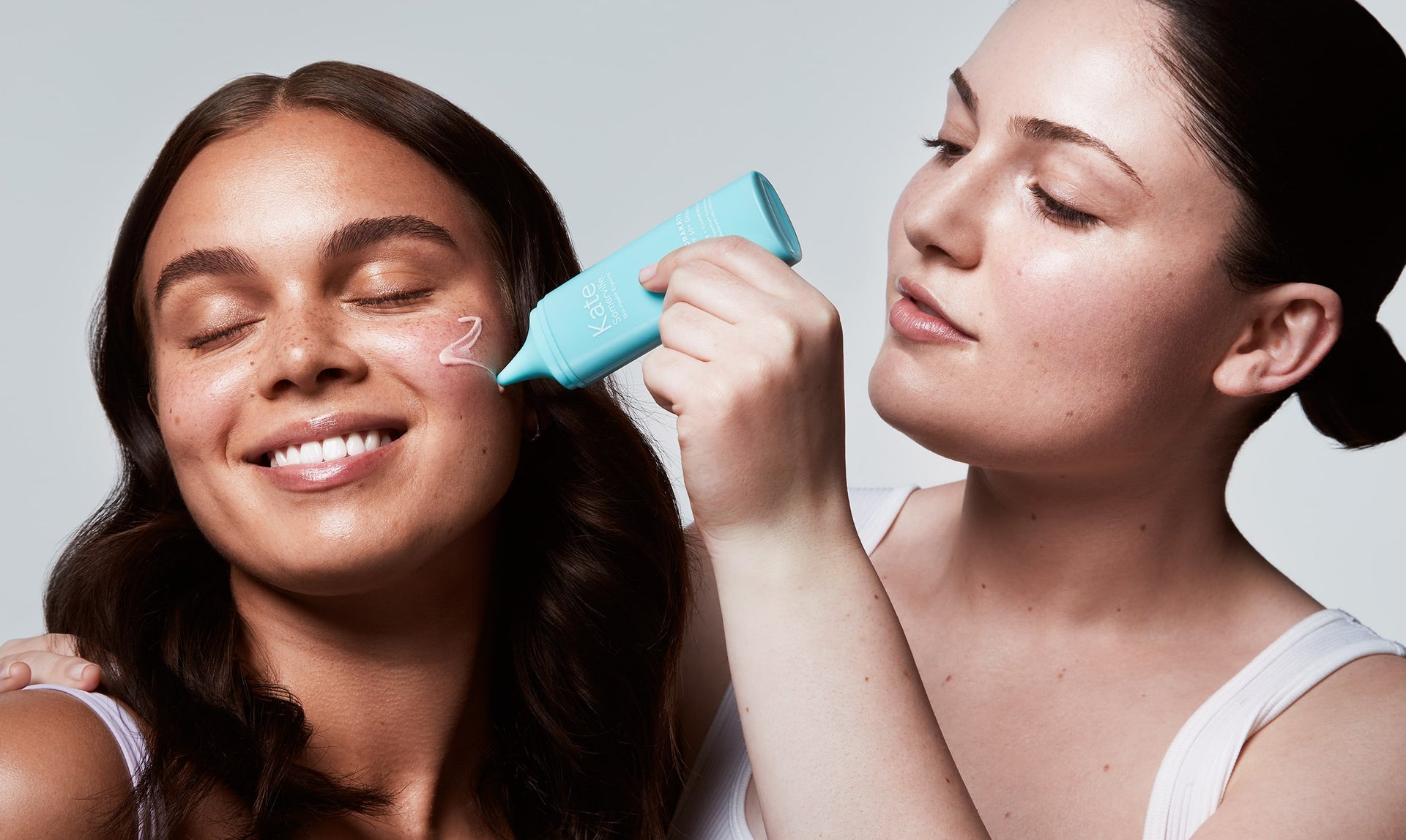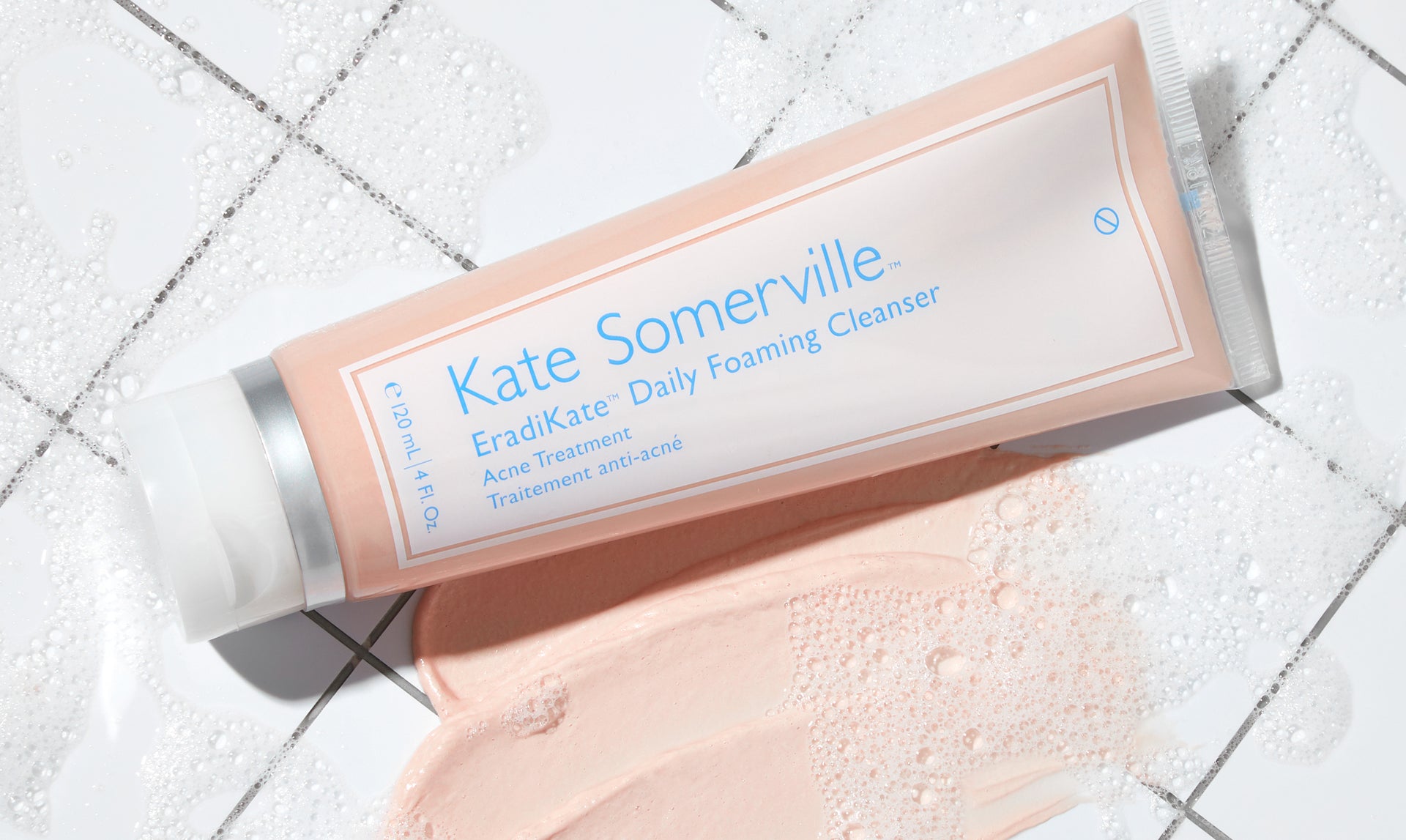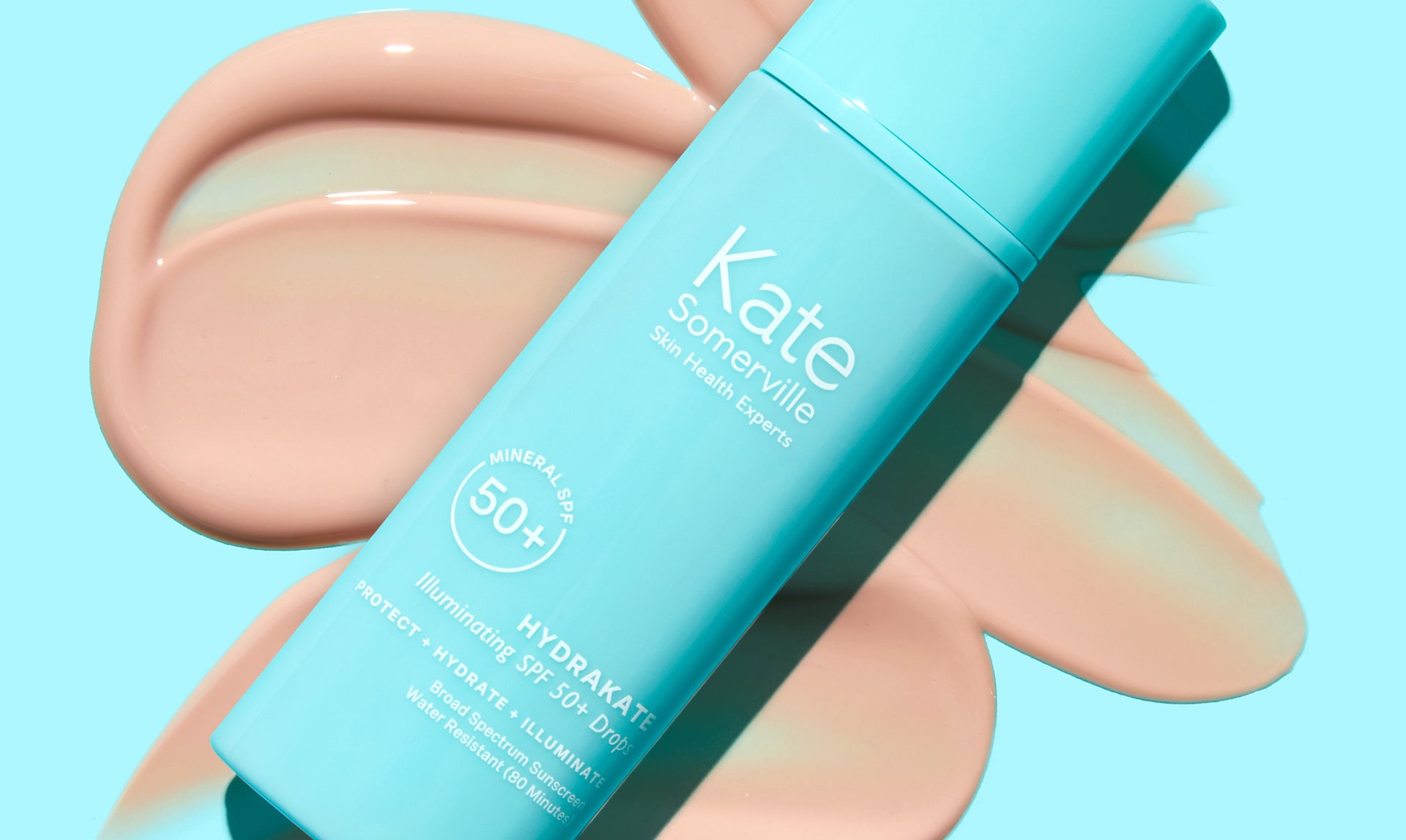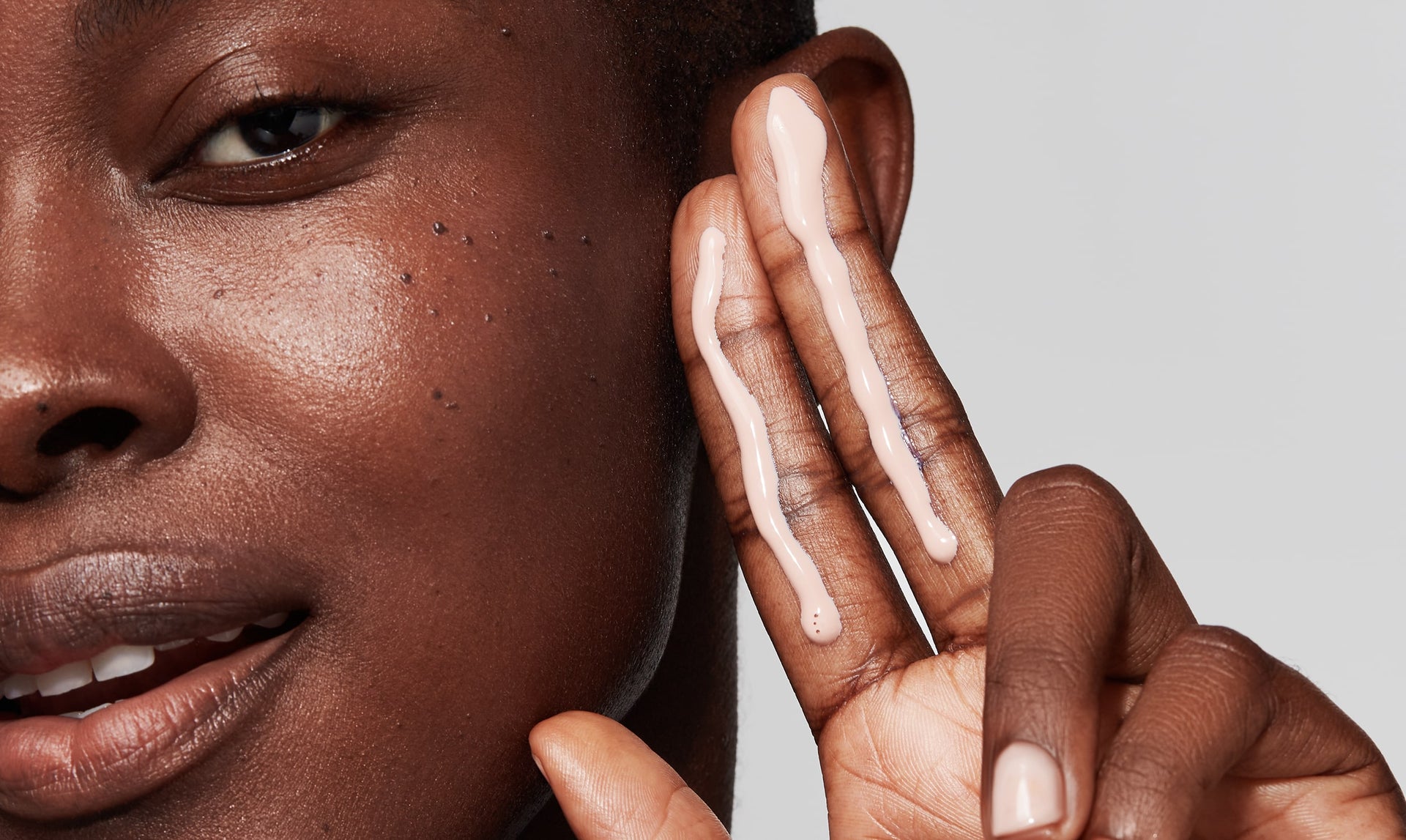At times it seems as though there are new skin care techniques available at spas and clinics every day. Understanding all the new techniques and how they can benefit your skin can be incredibly overwhelming. In fact, many of our clients come to us at the Kate Somerville Clinic asking what each new skincare fad is and if we offer it. As a result, we decided to sit down with our resident skin expert of 8 years, Michelle Freese, so we could share her knowledge of these new techniques with those of our community who might not be able to commute to the clinic. Our mission is to help you achieve the beautiful skin you deserve, no matter where you are in the world.
One of the most recent premium skincare practices you may have seen cluttering your social media feeds is called micro-needling, sometimes referred to as derma-rolling. Though the technique has been available for a number of years, it seems to only now be garnering lots of attention. The name itself can be quite alarming, which is why many of our clients wonder, what does micro-needling do? Thankfully, it is a lot less intense and terrifying than the name suggests. To be clear, a micro-needling treatment is a procedure which punctures the surface layer of the skin using a group of very tiny needles [1]. But the fine needles are not placed into your skin as they are during acupuncture, rather the procedure typically utilizes a roller containing tens of these tiny needles which your esthetician will then roll over your skin. We know, this sounds like it would be painful, but in fact, most clients experience very little pain during the procedure as the needles are designed to puncture the skin at a superficial level. Most at-home tools have needles that will not (and should not) exceed .3 mm whereas professional treatments may utilize needles around .5 mm in length.
Micro-Needling Benefits
Even though it doesn’t hurt, you are probably still wondering what would compel someone to literally roll needles across their face. Well, because the benefits and results that micro-needling can provide are worth it. From reducing the visible appearance of aging to evening skin tone, micro-needling may just be the skin care tool to get you the radiant skin you havebeen working for. Here are some of the skincare conditions that may benefit from the micro-needling technique:
- Anti-Aging - Many of the visible signs of aging including fine lines, wrinkles, and thinning of the skin are the result of the decreasing presence of some of the skin’s fundamental building blocks. This loss occurs naturally as we age but micro-needling can help slow down the process and can help reduce the appearance of aging [2]. In addition, micro-needling helps to increase the absorption of any anti-aging skincare product you apply after the treatment, such as anti-aging cream and wrinkle cream.
- Scars & Stretch Marks - Using similar mechanisms to those described above, micro-needling can also help reduce the appearance of scars [3]. This is especially true of acne scars which tend to be sunken inwards rather than raised. However, micro-needling is not recommended for those who have keloid scars, dome-shaped raised scars, as the process could cause the skin condition to worsen [4]. In much the same way, micro-needling can help breakdown stretchmark tissue, the skin markings which appear as the result of rapid growth, and fade their appearance over time with multiple treatments.
- Skin Tone & Pores - One of Michelle’s favorite benefits of micro-needling is that it can aid in improving the overall tone and texture of your skin while reducing the visible appearance of your pores. Any sort of discoloration such as age spots can begin to fade with multiple treatments, specifically when used in conjunction with age spot treatments. Those experiencing redness as a symptom of rosacea may also notice a difference as well.
Micro-needling results can be expected to be seen within a few weeks as your skin quickly rejuvenates itself. But to maintain those results you will need to have frequent and continuous visits.
Micro-Needling Options & What to Expect
Though some derma-rollers are available for at home treatments, it is recommended that you visit a professional who is trained in the practice to perform the procedure. Using an at-home micro-needling tool can pose a number of different risks, the worst of which is further damaging the skin by creating lesions that may then become infected. In addition, these at-home devices are typically hard to keep clean and maintain as the needles become dull after just a few uses making the tool ineffective and increasing the skin’s risk of injury or infection.
At-Home Micro-Needling
However, should you choose to perform micro-needling on yourself with an at-home device you must take care to not only maintain the cleanliness of your tool but learn how to perform the procedure to minimize the risk of injury. First, be sure to look for a tool that features needles at .3 mm or less in length, anything longer and you may damage your skin. You will also want to purchase your device from a reputable source such as a medical office or your esthetician’s office to ensure the quality of the needles. You can also avoid some of the risks stated above by cleaning your micro-needling device after every use. Simply soak the roller in some rubbing alcohol for three to five minutes to sterilize the device before storing it in its protective case for safe keeping. You will also need to keep track of how often you use your derma-roller and replace either the entire device or its head, depending on the model you have, after 10-15 uses to ensure the needles remain in prime condition.
When you are ready to begin your treatment, you will first need to prep your skin. Start by cleansing and gently exfoliating your skin to remove any dirt and oil that could cause infection should they be rolled into your skin. Check out our popular facial cleansers and facial scrubs and exfoliants to make this first step a breeze. There are many benefits of exfoliation and it is an essential step before many skin treatments.
To continue preparing your skin, apply a skin serum which features an ingredient such as hyaluronic acid. As a hydrating ingredient, hyaluronic acid serums can help maximize the results of at-home micro-needling and aid in preventing any adverse reactions.
Next, you are ready to begin treatment. Very gently roll the micro-needling device over your skin over each area of your face starting with your cheeks, chin, forehead, and then neck, if you desire. As you glide over each treatment area of your face roll the device in vertical, horizontal, and diagonal directions to help stimulate the skin’s reaction. However, be sure you do not micro-needle over the same section of your face more than two to three times per session as this could become too aggressive and result in irritation or other negative side effects. Once you have finished rolling your entire face, careful to avoid the delicate area of your eyes, apply a second layer of serum to increase absorption and condition the skin.
As you first begin using at-home micro-needling treatments, it is best to start slow with only one or two sessions per week. This will allow you to hone your technique and ensure that your skin does not have any sort of negative reaction to the procedure. From there you can build your usage to three to five times per week or even every day depending on your skin’s tolerance. And if you choose to perform at-home micro-needling we recommend checking in with your esthetician regularly so she can monitor your progress and detect any problems early on. You may even want to bring your device with you to an appointment so she can observe your technique and make any necessary corrections.
Professional Micro-Needling
When you choose to book a professional micro-needling procedure with your esthetician or dermatologist, you can expect the experience to be a little more intense as well as more effective than an at-home practice. When you arrive, your esthetician will start by cleansing your face and applying a serum much as you would at home in addition to a numbing cream. The tool she will use has longer needles, which means the patient may feel a little discomfort during the procedure without the use of numbing cream. The actual micro-needling process should last no more than 20 to 30 minutes after which she will apply another layer of serum and possibly a hydrating face mask to help recondition your skin.
As a cosmetic procedure, micro-needling does come with some possible side effects that a client may experience depending on the sensitivity of your skin, which is why it is important to discuss your options thoroughly with your esthetician before you start. The most common side effect of micro-needling is some minor skin irritation immediately following the procedure and some redness for a few days thereafter. More severe side effects include bleeding, bruising, infection, and peeling which is why micro-needling may not be the best treatment for those meeting certain conditions such as being pregnant, having psoriasis or eczema, open wounds, recently had radiation therapy, or having a history of scarring.
Fortunately, if you decide to undergo micro-needling, you can expect very little downtime after the procedure, though, as we have discussed, you may experience some redness or dry skin for only a few days. Your skin will also become more sensitive to the sun or sun damage, so you will need to be careful should you be exposed to sunlight for an extended period of time and wear SPF protection. Read more in our related blog posts as we describe various benefits of sunscreen and answer the common question, How does sunscreen work to protect your skin?
So does micro-needling work? Yes! You will have to decide which procedure you are most comfortable with and the frequency that is best for your skin, but micro-needling can provide incredible results to those who utilize it as a regular skincare practice. Just be sure to discuss your options with your esthetician so she can walk you through the unique benefits andchallenges that your skin may experience as a result.
Sources:
